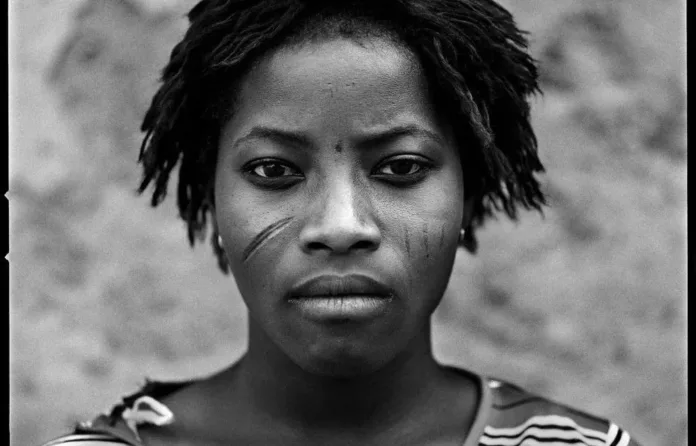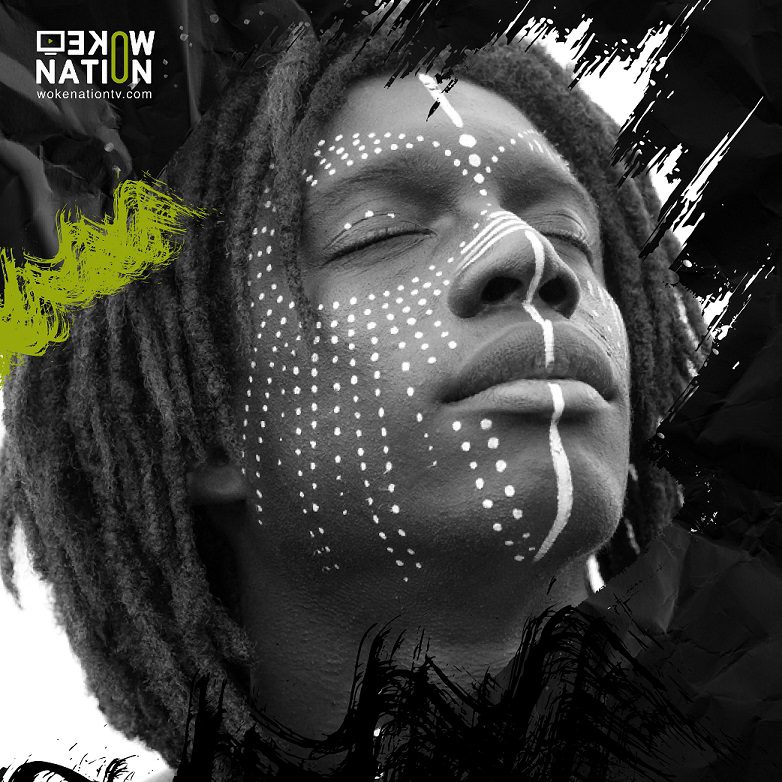Africa has a rich culture of body markings(tribal marks). These markings can be described as an integral part of society, history, and traditions. Body markings were and are both temporary and permanent modifications of the body; which transmit complex messages about identity and social status.
Tribal marks can also be described as facial marks. Although well dominated in Africa; it could be traced to some other Africans who were living in Egypt in the 5th century BC. During that time, a Greek historian, Herodotus wrote about some foreigners living in Egypt; they had their foreheads cut with knives to differentiate themselves from the Egyptians.
This practice was further adopted years later; when several kings of various kingdoms in Africa, started invading other kings and their people for land and other resources. As a result, the invaders tattooed themselves and their families to distinguish themselves from the captured kings and their subjects; whom they now regard as slaves.
Also Read: Life of Severus, The First African Born Emperor of Rome
Body marking has been used for centuries in parts of Africa to indicate a person’s tribal heritage. It’s becoming less common, nonetheless, there are people who still carry the marks of their ancestors.
Sacrification
Scarification is a special African form of body art that involves ‘scarring’ the skin to give it a raised mark. While it still exists in Africa and other parts of the world, it is however practised less in this day.
It is also termed as the practice of incising the skin; usually done with a sharp instrument, such as a knife, glass, stone, or coconut shell. These incisions were done with care, such that the contour of the scar tissue on various places of the body was maintained.
There were various ways in which the scarification was performed depending on the purpose and tribe. A stone or coconut shell was pressed and dragged across the fresh in patterns or designs leaving behind cuts; then dark pigment such as charcoal or other acerbic plant juice was rubbed into the wound to make permanent blisters. Others used fish hooks to pull the skin and then slice it with a sharp object. Once the wound was inflicted they were further inflamed by rubbing ash and other substances into it. These cuts when healed form heavy raised scars.
Temporary Body Marking
The most common temporary body markings included ochre, charcoal and henna paintings. Ochre was mostly used by the Maa speaking communities. They were to make decorative marks during celebrations or to apply on hair specifically by morans warriors. Ochre would be mixed with water for body decorations, and animal fat for hair applications.
Permanent marks such as scars were regarded as appealing to touch as well as to look at. It was used as a testimony that women could withstand the pain of childbirth.
Permanent Scars
Some communities used cicatrisation, which is a technique where a gash is made on the skin with a sharp instrument. The skin is then irritated by rubbing caustic plant juices onto the wound to form blisters; this eventually healed, leaving raised scars.
Dark pigments such as ground charcoal were sometimes rubbed onto the wound for emphasis. These cuts, when healed, form raised scars. Beautiful and complex designs depended on the artist’s skills but also on a person’s tolerance to pain.
In some cultures, Ash is used to marking the place where the incisions are to be made, it takes a few seconds to make the cuts.
Scarring is becoming less popular in Africa. A Part of the people believes, it is one of the ways traditional culture is expressed. The Africans who firmly still believe it opt for; scarring, including young women who may have cuts on their backs and stomachs when they reach puberty.
In some traditional African communities, body markings were like wearing your identity card on your face. It is a mark of pride, and a major aesthetic and cultural component in the past, and in certain areas today.
Tribal Marks
Tribal marks served different purposes in different tribes including identification, healing, spiritual protection and beautification. However, with the advent of western religions, most tribes stopped the process because it was deemed unhealthy and pagan.
Nupe Tribal Mark
The Nupe people are an important minority in Kwara State and Kogi State. Their tribal marks are drawn with many curves on the cheeks or one vertical strip on each cheek. These scars are sometimes to highlight prestige or to identify the family to which they belong. They also wear it for protection, as well as jewelry adornment.
Pele Tribal Mark
Pele has different variants. The variants include; Pele Ife, a three longitudinal line inscribed on the cheek. It is peculiar to the Ile Ife people. Pele Ijebu and Pele Ijesha are other variants of Pele. Both variants are three short longitudinal lines inscribed on the cheeks.
Owu Tribal Mark
Owu tribal marks consist of six incisions on each side of the cheeks. These side tribal cheeks are peculiar to the indigenes of Owu; a historical city in Abeokuta, the capital of Ogun State, Nigeria. The Owu tribal mark was inscribed on the cheeks of Chief Olusegun Obasanjo; the former President of the Federal Republic of Nigeria.
Gombo Tribal Mark
The Gọmbọ style, known as Kẹkẹ, consists of multiple straight and curved lines about a half of an inch apart inscribed on the cheeks on both sides of the mouth. Indigenes of Ogbomosho in Oyo State are usually identified by the Gombo or Kẹkẹ style of Yoruba tribal marks.
Abaja Tribal Mark
Abaja can be both a basic and a complex style. In its basic form, it is either three or four horizontal stripes on the cheeks. The Abaja style also consists of twelve horizontal lines, six lines per cheek. It is often referred to as “Abaja Alaafin Mefa Mefa”. This tribal mark is unique to the indigenes of Oyo, Nigeria. The Abaja tribal mark style was inscribed on the cheeks of Lamidi Adeyemi III, the Alaafin of Oyo. Other Yoruba tribal marks include Ture, Mande, Bamu and Jamgbadi.
Igbo Tribal Mark
Ancient Igbo tribal markings were more for affluence and social status, commonly known as Ichi. However, later on, tribal marks were given to women too for the purposes of identification, beautification and healing. These consisted of solar disc-like incisions on either cheek or two simple lines drawn on the side of the eyes.
Tribal marks are not part of the Igbo culture. A small number of locals have incisions on their faces that aren’t part of their culture; but rather a procedure to prevent an evil child named Ogbanje from torturing his earthly parents by being born again and over again only to die at a certain age.
Individuals who term themselves unfortunate for having these marks are sometimes ashamed of them and trying to cover them with makeup. The practice of having tribal marks is fading, as it is now abhorred by most parents.

